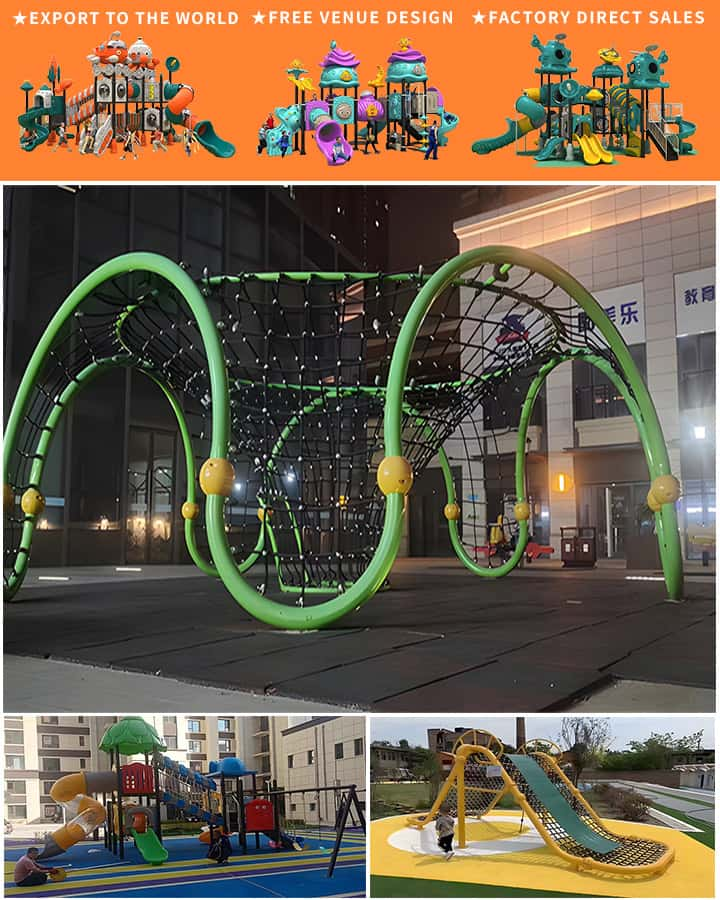In recent years, the importance of physical activity and outdoor play for children’s development has gained significant attention. As schools strive to create well-rounded educational experiences, the role of playground equipment becomes crucial. However, funding these projects can be challenging. This article explores how schools can secure grants for playground equipment, providing a detailed guide on available resources, application processes, and strategies for success.
Understanding the Importance of Playgrounds
Playgrounds are more than just recreational spaces; they are vital for fostering children’s physical health, social skills, creativity, and emotional well-being. Adequate playground equipment allows students to engage in various forms of play, from climbing and sliding to team sports and imaginative games. These activities promote motor skills, encourage cooperation, and provide an outlet for energy, contributing to overall academic performance and mental health.
Identifying Available Grants
Several organizations and government agencies offer grants specifically aimed at improving school playgrounds. Here are some prominent sources:
Federal Grants: The U.S. Department of Education and other federal agencies provide several grant programs that can be leveraged for playground improvements. Programs like the 21st Century Community Learning Centers (CCLC) often include provisions for recreational facilities.
State Grants: Many states offer specific grants for playground development. For example, the California Department of Education provides playground equipment grants through various initiatives.
Local Government Grants: City and county governments frequently allocate funds for community improvement projects, including school playgrounds. Local parks and recreation departments are good points of contact for information on these opportunities.
Private Foundations: Numerous private foundations support initiatives that enhance children’s environments. Organizations such as the National Recreation and Park Association (NRPA) and KaBOOM! are known for their contributions to playground projects.
Corporate Sponsorships: Many companies have Corporate Social Responsibility (CSR) programs that fund community projects. Partnering with local businesses can yield both financial support and additional resources.

Steps to Apply for Grants
Securing a grant involves careful planning and adherence to application requirements. Here’s a step-by-step guide:
Needs Assessment: Begin by conducting a thorough needs assessment of your current playground facilities. Identify areas for improvement and prioritize them based on safety, inclusivity, and educational value. Engage stakeholders, including teachers, parents, and students, to gather diverse perspectives.
Research Grants: Investigate potential funding sources that align with your identified needs. Each grant will have specific eligibility criteria, application deadlines, and required documentation. Create a list of target grants and note their respective requirements.
Develop a Project Plan: Outline a detailed project plan that includes objectives, timelines, budget estimates, and expected outcomes. Clearly articulate how the new or upgraded playground equipment will benefit students and the community. Provide evidence of need, such as data on current playground conditions and student participation rates.
Prepare Documentation: Grant applications typically require extensive documentation. This may include a detailed budget, project description, letters of support from key stakeholders, and proof of organizational capacity to manage the project. Ensure all documents are clear, concise, and professionally presented.
Submit Applications: Adhere to all application guidelines and submit materials before the deadline. Double-check for completeness and accuracy to avoid disqualification. Maintain organized records of everything submitted.
Follow Up: After submitting applications, follow up with grant providers to confirm receipt of materials and inquire about the review process timeline. Demonstrating proactive engagement can positively influence the evaluators.
Strategies for Success
Broaden Your Network: Cultivating relationships with local businesses, nonprofits, and community organizations can open doors to additional funding opportunities and volunteer support.
Leverage Matching Funds: Some grants require matching funds. Seek out other sources of financing, such as fundraising events, to fulfill these requirements and demonstrate community commitment.
Highlight Impact: Emphasize the positive impact of playground improvements on student health, safety, and academic success. Use compelling narratives, data, and visual aids to make your case persuasive.
Stay Informed: Keep abreast of new grant opportunities and policy changes by subscribing to newsletters from relevant agencies and attending workshops or webinars on funding strategies.
Conclusion
Securing grants for playground equipment in schools is a multifaceted endeavor that requires diligent planning, strategic partnership building, and effective communication. By understanding the importance of playgrounds, identifying suitable grant sources, preparing meticulous applications, and implementing smart strategies, schools can successfully obtain the funding needed to create safe, engaging, and developmentally beneficial play environments for their students. With determination and effort, the dream of enhanced playground facilities can become a reality, enriching the lives of countless young learners.




